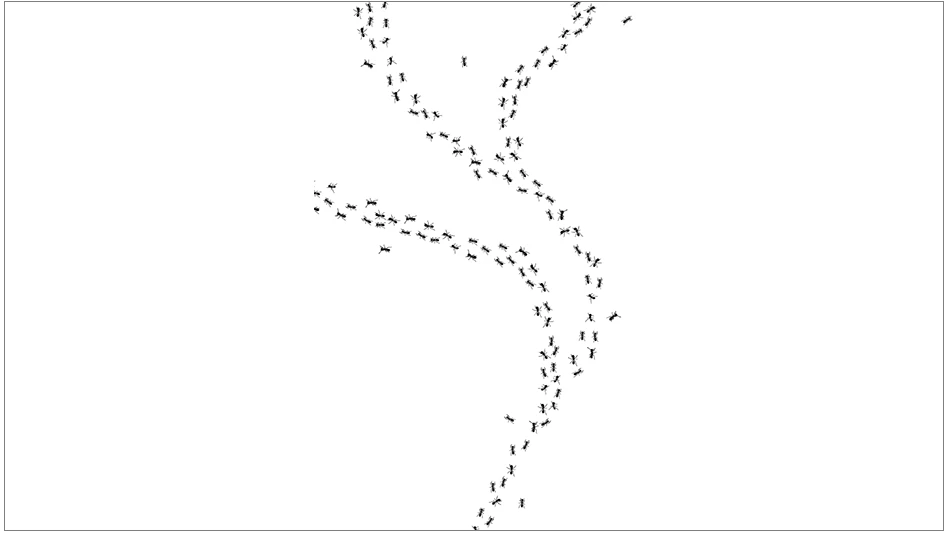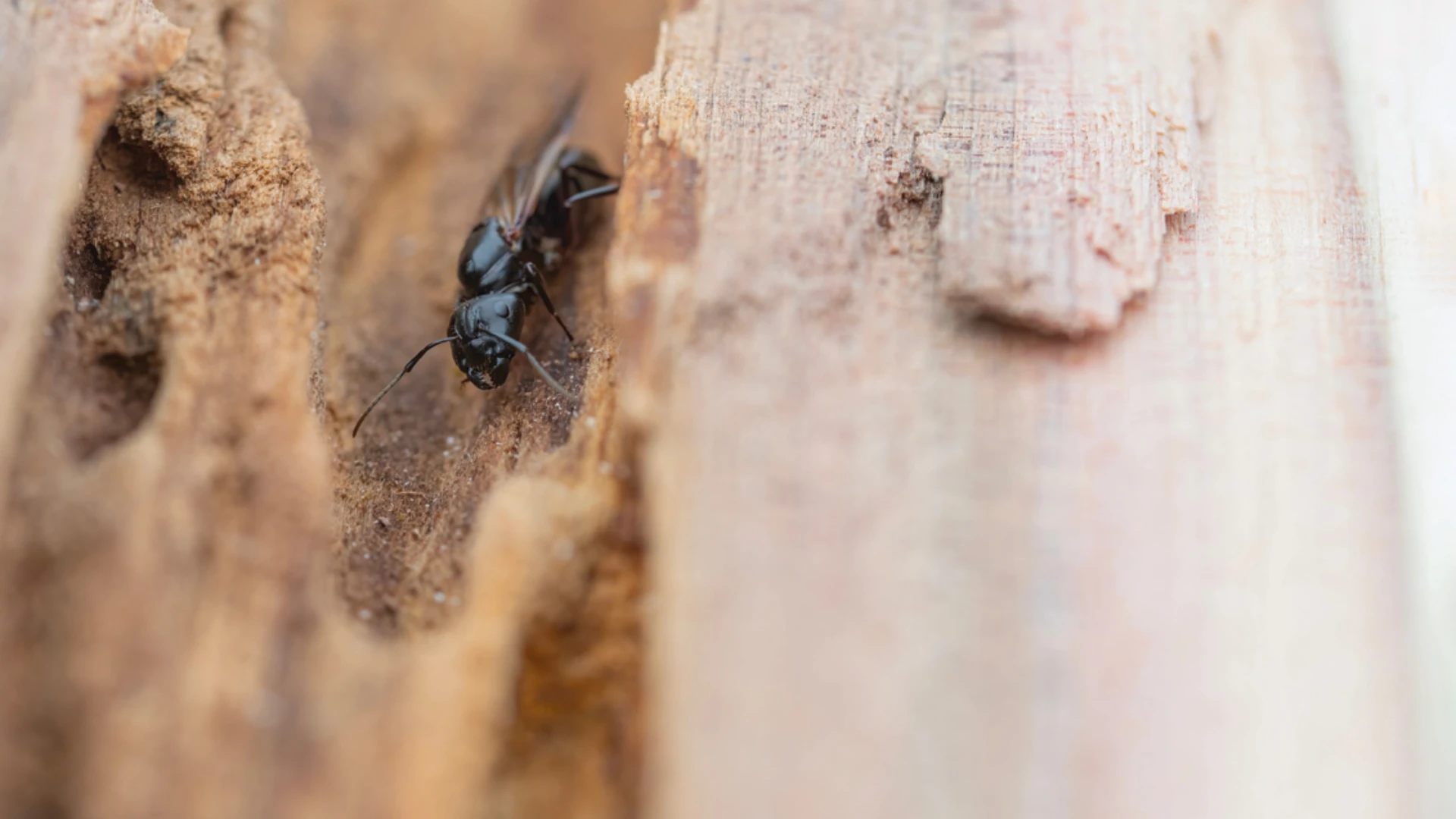When I was asked to write this article almost a year ago, I was just going to write about Asian ladybugs. However, as the phone began to ring at my office this season, I realized I needed to expand an article about occasional invaders to include information about ladybugs, boxelder bugs and wasps. They are all a nuisance to homeowners.
INSECT INVADERS. It’s tough receiving calls in January and February from frantic homeowners telling me about the invasion of thousands of insects into their homes. Most of the time these pests end up dying on the floor near a big window.
At that point, the best tool to use is the vacuum to suck them up. I explain to my customers that to treat these pests in the walls is unwise because killing them in the wall will draw other nuisance bugs that eat dead ladybugs and boxelder bugs. Unfortunately for the homeowner, a high number of insects have chosen their house to live in. Before winter comes, the insects look for a hibernation spot. When they come to a house with gaps under the siding, around windows, doors or other entry points, they move in, claiming the home as theirs, and gain access into the walls, attic spaces and even crawlspaces. The problem becomes obvious in January and February when these insects wake up on nice days and invade the living space of the home in huge numbers.
I explain to customers that it could be a one-time problem or it may become a yearly occurrence. I tell them prevention is the key in this situation. I then recommend a good inspection to try to locate the entry points into the home. If possible, we offer exclusion by caulking the areas around the windows, doors and other problem areas. Some customers are willing to have this done while others are not. Educating your customers is always valuable. But some just want you to solve the problems they have right now and are not interested in prevention. I let them know we could treat the house so when the ladybugs and boxelder bugs come out they die, but usually, they die quickly on their own.
If you go out to see the home, you can bid on the exclusion or on your recommended treatment. A treatment I have found to be successful is a preventive perimeter power spray in July and September. We also dust any cracks and crevices where the siding meets the concrete foundation, window frames, doors jams and other entry points. Dusting with a repellant dust may encourage the insects to go elsewhere rather than come back to the house. This type of approach deals with the insects as they are trying to enter the home, thus stopping or greatly reducing the problem. This treatment will also prevent other unwanted guests as well. And there is one other invader that causes tremendous fear in many a person — the wasp.
WASP CONTROL. Wasps can be one of the most challenging pest problems you can encounter because of their hibernation habits. Our company, which is located in St. Louis, gets a large number of calls about wasps inside houses in the fall and in the spring. In these cases, usually these wasps are mated females waiting until it’s time to go out and make a new nest. The problem is that they are fooled on those nice days in the middle of winter and think it’s spring. Then they find their way into the house, unable to get out to make a nest. Typically, the wasps get trapped in the room with the most windows, trying to get out. What is difficult is that our treatment involves individual wasps, not a nest. Therefore, the search does not involve a single source, but a large number of unrelated, uninvited guests. Fall treatments for wasps can be as simple as treating a chimney or going in the attic and dusting around the can lights. The tough ones could require a roof inspection and treatment at the dormers, killing the insects as they are moving in for winter.
When spring comes and wasps enter a house, you may see constant activity that will identify the location of the spring or summer nest. Treat these areas as you find them. Nests may be hidden in the soffit or you may see wasps going under the shingles by the gutter line of the house to a hidden nest. These inspections are not for the faint of heart — you may have to go on the roof to solve this type of problem. Most of our company’s service trucks carry 32-foot ladders so they are equipped for this type of inspection and treatment.
For example, recently I was at a woman’s home that was built in a beautiful wooded area. She had moved in this past January. When I was called to her home, it was April and her house had between three and 20 wasps a day inside. She had two children under the age of three and was frightened to live in her new home. Another pest control company referred her to me because they did not know what to do. I interviewed the woman, asking how many wasps she was seeing and where she was seeing them. I inspected the attic and found no nest but did see some activity on the outside. This situation involved treating the attic and the eaves of the house. The soffit was sealed and I suggested dusting into these sealed areas. Targeted specific treatments should solve her wasp problem for this year.
|
VERSATILE VACUUMS |
|
Removing insects by vacuuming is an increasingly important step in pest control. In addition to using a vacuum for ladybugs, pest management professionals can use them for many types of pest removal, including cockroach and spider control. Taking the time to use a vacuum can result in 50 percent or better immediate reduction in a cockroach population in a restaurant, thereby making it easier for baits and other treatments to eliminate the remaining insects. For web-building spiders, vacuums clearly result in near total elimination of the existing infestation. In the future, the vacuum, together with the caulking gun, will replace the sprayer as the tools of pest control recognized by both pest management professionals and the public. Physical removal of insect pests using a vacuum device is a viable and important control option for service professionals. Companies that fail to use these devices in their cockroach control programs are missing significant benefits in providing their customers a pest-free environment more quickly and with fewer callback services needed. Be sure to use the appropriate vacuum device and equip it with a HEPA filter. Editor’s note: This information was excerpted from ANThology, The Best of Stoy Hedges, which is available for $39.95 by visiting http://www.pctonline.com/store/productDetail.asp?CatId=2&SubCatId=5&Id=43. |
This customer did not want to wait until she saw wasps flying over her children’s heads — she wanted them prevented. I explained this was not a one-time magic wand and it would be effective, but it may take time for total success. She wanted her house back and was willing to work with us. The problem here is that most likely the wasp problem will recur each year due to the house’s location and structure. When you solve a problem like this, and you’re honest about what you can and cannot control, the loyalty you elicit from the customer is priceless.
CONCLUSION. If you find the entry and seal it off and deny access to the soffit, attic, dormer, etc., there can be a long-term solution without total reliance on chemical control. Ladybugs, boxelder bugs and wasps can be a great profit center for you, but there are times when you will want to pull your hair out. The celebration and the gratitude when you solve these types of problems can be rewarding — both financially and for your ego.
The author is president of Holper Pest & Animal Solutions, St. Louis, Mo. He can be reached at jholper@pctonline.com.

Explore the June 2002 Issue
Check out more from this issue and find your next story to read.
Latest from Pest Control Technology
- CAPMA Hosts 2025 Legislative Day in Sacramento
- Grizz Pest Management Bartends for a Cause
- Rose Pest Solutions Becomes Official Pest Provider of Chicago Fire FC
- WSPMA Hosts Legislative Day at Washington State Capitol
- A-1 Pest Control Marks 59 years in Business
- Hawaii PCO Shares Regulatory Challenges, Business Impacts from Lahaina Wildfires
- 5 Tips for Reducing Waste in the Office and in the Field
- OvoControl Now Available in Chile





